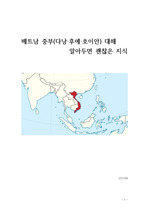[Essay] Why do we punish?
현점
다운로드
장바구니
소개글
Q: Why do we punish? Using a comparative example and theories studied in this subject, discuss how and why the goals of punishment might vary in different national and cultural contexts.목차
1. Introduction2. Emile Durkheim’s perspective on punishment
3. Mass Incarceration of America
4. Halden Prison in Norway
5. Governmentality
6. Conclusion
본문내용
Punishment has long been used to deter and limit criminal behaviour for the benefit of society. There are many different types of punishments for many different reasons, and they can be temporary or lifelong. However, at this point, we need to know the ultimate reason as to why punishment should be implemented. In terms of reasons for punishment, Emile Durkheim’s theory of the necessity of punishment will be provided, which is to maintain order in society based on morality and the solidarity of the members of society (Smith, 2014). This will also be illustrated with examples of mass incarceration in America and Halden Prison in Norway to show that the functions and purposes of punishment can differ depending on the national and cultural context with the theory of governmentality.참고 자료
Durkheim, E. (1983). The division of labor in society. Free Press.Fair, H. & Walmsley, R. (2021). World Prison Population List (13th edition). Institute for Crime & Justice Policy Research, London. https://www.prisonstudies.org/sites/default/files/resources/downloads/world_prison_population_list_13th_edition.pdf
Foucault, M. (2009). Security, territory, population : lectures at the College De France, 1977–1978 (M. Senellart, F. Ewald, & A. Fontana, Eds.; G. Burchell, Trans.). Palgrave Macmillan UK. https://doi.org/10.1057/9780230245075
Garland, D. (1990). Punishment and modern society : a study in social theory. University of Chicago Press.
Hanssen, N., & Hoidal, A. (2022). The Norwegian Prison System: Halden Prison and Beyond (1st ed.). Taylor and Francis. https://doi.org/10.4324/9781003195887
Kristoffersen, R. (2022). Correctional Statistics of Denmark, Finland, Iceland, Norway and Sweden 2016-2020. University College of Norwegian Correctional Service. https://www.fangelsi.is/media/almennt/Nordic-Statistics-2016_2020_final.pdf
Lipsey, M. & Cullen, F. (2007). The Effectiveness of Correctional Rehabilitation: A Review of Systematic Reviews. Annual Review of Law and Social Science, 3(10), pp. 297-320, DOI: 10.1146/annurev.lawsocsci.3.081806.112833.
MacKENZIE, D. L. (2001). Corrections and Sentencing in the 21st Century: Evidence-Based Corrections and Sentencing. The Prison Journal (Philadelphia, Pa.), 81(3), 299–312. https://doi.org/10.1177/0032885501081003001
Smith, K. (2014). Émile Durkheim and the collective consciousness of society: a study in criminology (1st ed., Vol. 1). NBN International.
Thompson, P. K. (2003). Emile Durkheim (2nd ed., p. xii+179–xii+179). Routledge. https://doi.org/10.4324/9780203405338


















![[Essay] Why do we punish?](/doc/cover/29455113/Essay__Why_do_we_punish.jpg)








